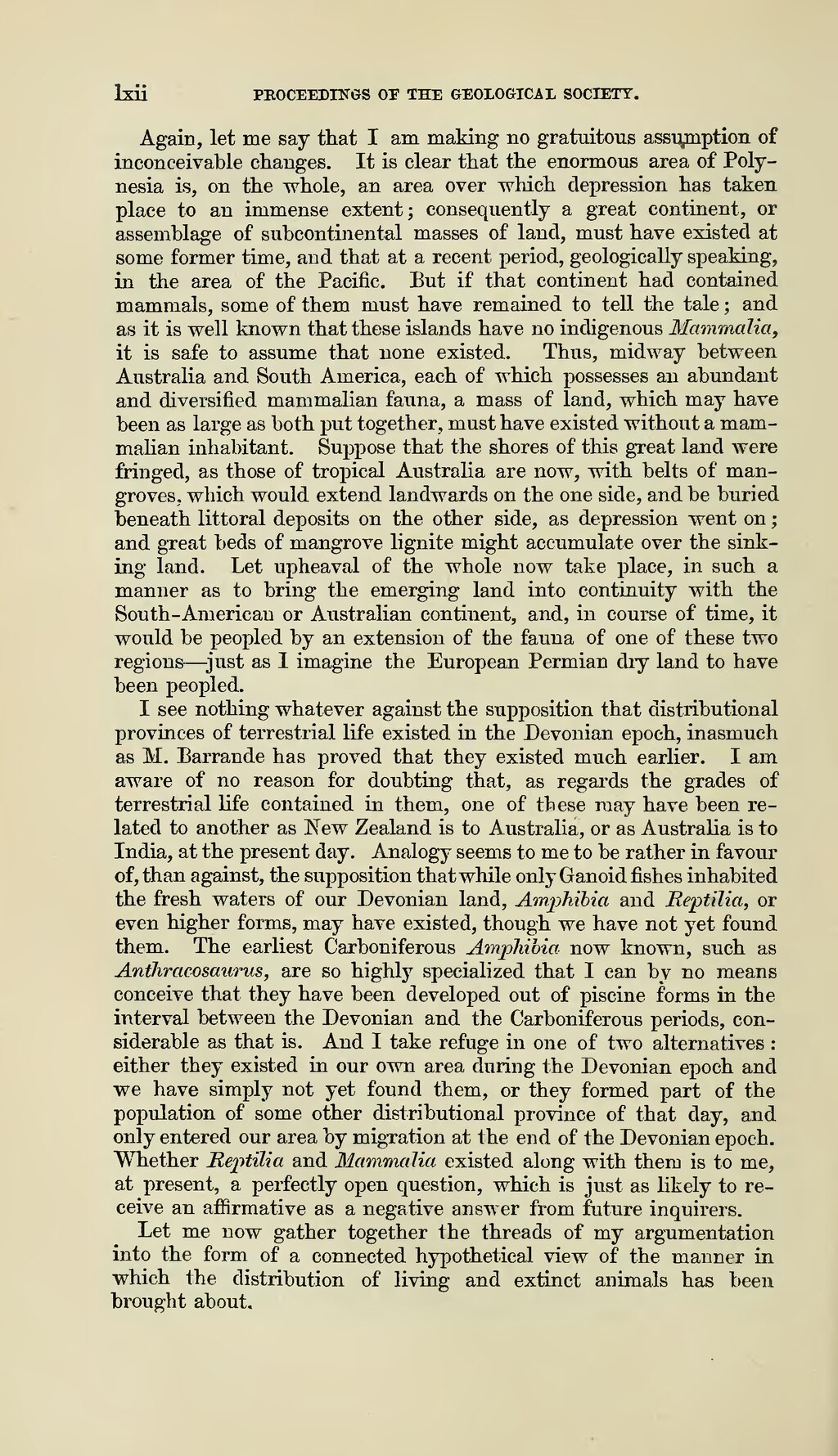Again, let me say that I am making no gratuitous assumption of inconceivable changes. It is clear that the enormous area of Poly- nesia is, on the whole, an area over which depression has taken place to an immense extent; consequently a great continent, or assemblage of subcontinental masses of land, must have existed at some former time, and that at a recent period, geologically speaking, in the area of the Pacific. But if that continent had contained mammals, some of them must have remained to tell the tale; and as it is well known that these islands have no indigenous Mammalia, it is safe to assume that none existed. Thus, midway between Australia and South America, each of which possesses an abundant and diversified mammalian fauna, a mass of land, which may have been as large as both put together, must have existed without a mam- malian inhabitant. Suppose that the shores of this great land were fringed, as those of tropical Australia are now, with belts of man- groves, which would extend landwards on the one side, and be buried beneath littoral deposits on the other side, as depression went on; and great beds of mangrove lignite might accumulate over the sink- ing land. Let upheaval of the whole now take place, in such a manner as to bring the emerging land into continuity with the South-American or Australian continent, and, in course of time, it would be peopled by an extension of the fauna of one of these two regions—just as I imagine the European Permian dry land to have been peopled.
I see nothing whatever against the supposition that distributional provinces of terrestrial life existed in the Devonian epoch, inasmuch as M. Barrande has proved that they existed much earlier. I am aware of no reason for doubting that, as regards the grades of terrestrial life contained in them, one of these may have been related to another as New Zealand is to Australia, or as Australia is to India, at the present day. Analogy seems to me to be rather in favour of, than against, the supposition that while only Ganoid fishes inhabited the fresh waters of our Devonian land, Amphibia and Reptilia, or even higher forms, may have existed, though we have not yet found them. The earliest Carboniferous Amphibia now known, such as Anthracosaurus, are so highly specialized that I can by no means conceive that they have been developed out of piscine forms in the interval between the Devonian and the Carboniferous periods, considerable as that is. And I take refuge in one of two alternatives: either they existed in our own area during the Devonian epoch and we have simply not yet found them, or they formed part of the population of some other distributional province of that day, and only entered our area by migration at the end of the Devonian epoch. Whether Reptilia and Mammalia existed along with them is to me, at present, a perfectly open question, which is just as likely to receive an affirmative as a negative answer from future inquirers.
Let me now gather together the threads of my argumentation into the form of a connected hypothetical view of the manner in which the distribution of living and extinct animals has been brought about.
